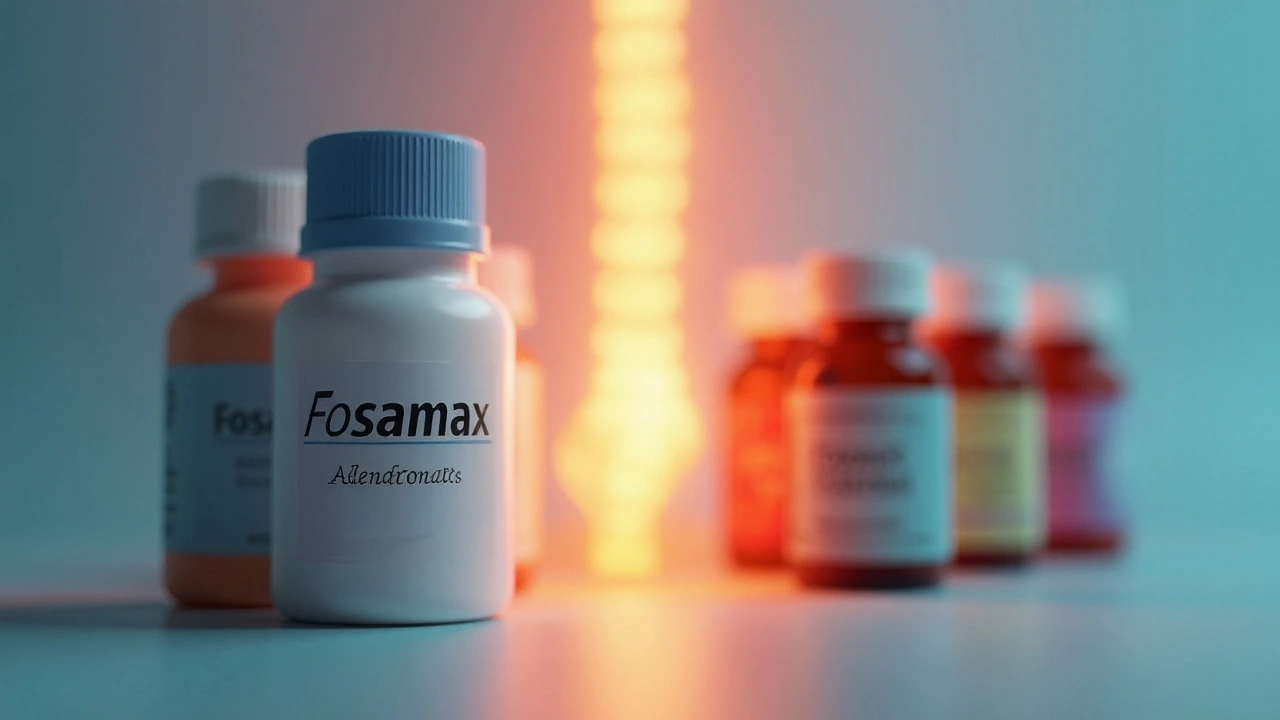Bone Health Drugs: What They Are and How They Work
When talking about bone health drugs, medications that help prevent bone loss, strengthen the skeleton, and reduce fracture risk. Also known as osteoporosis medications, they play a central role in managing bone‑related conditions. The most common groups you’ll hear about are bisphosphonates, drugs that slow bone breakdown by inhibiting osteoclast activity, calcium supplements, basic mineral sources that supply the building blocks for bone tissue, vitamin D, a hormone‑like vitamin that enhances calcium absorption and bone remodeling, and SERMs, selective estrogen receptor modulators that mimic estrogen’s bone‑protective effects. Understanding how these pieces fit together helps you choose the right regimen for your needs.
First, let’s look at bisphosphonates. They are the workhorse of bone health drugs because they directly target the cells that break down bone, called osteoclasts. By binding to bone mineral surfaces, they create a hostile environment for osteoclasts, reducing the rate of bone resorption. Common examples include alendronate and risedronate, which are taken weekly or monthly in pill form, and zoledronic acid, an IV infusion given once a year. Clinical data show a 30‑50% drop in fracture rates for patients on these meds, making them a go‑to option for post‑menopausal women and men with osteoporosis.
Key Types of Bone Health Drugs
While bisphosphonates tackle bone loss head‑on, calcium supplements provide the raw material needed for new bone formation. Most adults need about 1,000 mg of calcium daily, but dietary intake often falls short. Calcium carbonate and calcium citrate are the two main forms; carbonate is cheaper and works best with food, whereas citrate is easier on the stomach and can be taken any time. Pairing calcium with a reliable source of vitamin D maximizes absorption, turning a simple mineral into a powerful bone‑building partner.
Vitamin D is more than a sunshine vitamin—it’s a hormone that regulates calcium balance and stimulates osteoblasts, the cells that build bone. Deficiency is common, especially in regions with limited sunlight or in older adults whose skin makes less vitamin D. Blood levels below 20 ng/mL are considered insufficient and correlate with higher fracture risk. Daily doses of 800–1,000 IU are usually enough for maintenance, but higher therapeutic doses may be prescribed for those with severe deficiency. When combined with calcium, vitamin D creates a synergistic effect that strengthens bones more effectively than either alone.
For patients who can’t tolerate bisphosphonates or need an alternative, SERMs offer a different mechanism. Drugs like raloxifene bind to estrogen receptors in bone tissue, mimicking estrogen’s protective role without stimulating breast or uterine tissue. This selective action reduces bone resorption while carrying a lower risk of certain cancers. SERMs are especially useful for younger post‑menopausal women who want to avoid the long‑term side effects of bisphosphonates, such as atypical femur fractures or jaw osteonecrosis.
All these bone health drugs share a common requirement: lifestyle support. Weight‑bearing exercise, a balanced diet rich in protein, and avoiding smoking and excessive alcohol amplify medication benefits. For instance, a study from the University of Sydney showed that patients who combined bisphosphonate therapy with resistance training improved bone density by an additional 5% compared to medication alone. So, the best outcomes come from a combo of drug therapy, nutrition, and physical activity.
Choosing the right bone health drug stack depends on several factors: age, gender, fracture history, kidney function, and personal preferences regarding dosing frequency. A younger adult with mild osteopenia might start with calcium, vitamin D, and regular weight‑bearing exercise, while an older patient with a prior fracture may need a bisphosphonate plus supplemental calcium and vitamin D. Your doctor will weigh the benefits against potential side effects—like gastrointestinal irritation from oral bisphosphonates or rare blood clots with SERMs—to tailor a plan that fits your health profile.
Now that you have a clear picture of the main players—bisphosphonates, calcium and vitamin D supplements, and SERMs—you can see how each contributes to stronger bones. Below you’ll find a curated list of articles that dive deeper into specific medications, dosing tips, safety considerations, and real‑world comparisons. Use them to fine‑tune your bone‑health strategy and make informed choices about the drugs that work best for you.

